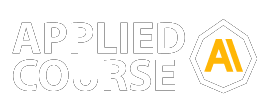C Programming
Category: Gate CSEC Programming
Category: Gate CSE₹3,500.00 ₹9,000.00
Instructor
Chekuri Srikanth Varma
C language Tutorial with programming approach for beginners and professionals, helps you to understand the C language tutorial easily. Our C tutorial explains each topic with programs.
The C Language is developed for creating system applications that directly interact with the hardware devices such as drivers, kernels, etc.
C programming is considered as the base for other programming languages, that is why it is known as mother language.
It can be defined by the following ways:
- Mother language
- System programming language
- Procedure-oriented programming language
- Structured programming language
- Mid-level programming language
Course Features
Lectures
75 Lecture
Duration
36+ Hours
Skill level
Easy
Language
English
Assessments
Yes

QUALIFICATION: Masters from IISC Bangalore PROFESSIONAL EXPIERENCE: 9+ years of Experience( Yahoo Labs, Matherix Labs Co-founder and Amazon)
C Programming
Category: Gate CSE₹3,500.00 ₹9,000.00
Instructor
Chekuri Srikanth Varma
46 Comment(s)
Loading...
© 2026 - All rights are reserved- AAIC Technologies pvt ltd

